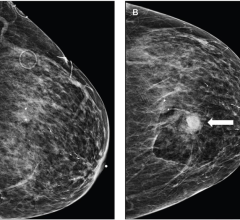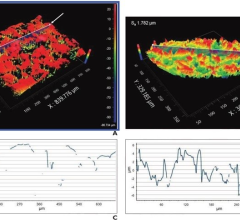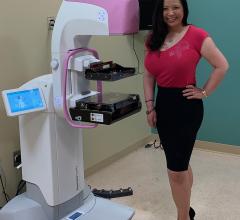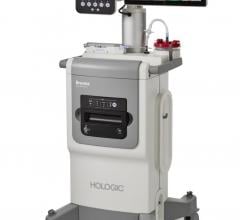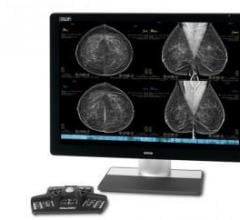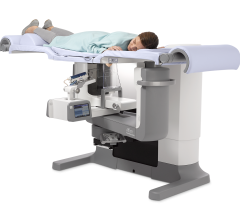
Elizabeth DePeri, M.D.
Today’s medical professionals are looking for every advantage available in their quest to improve patient care, provide accurate diagnostic outcomes and simultaneously manage the myriad of economic hurdles that impact the cost of doing business. Breast biopsy is in the critical care path of women’s healthcare and the practice of performing fast, safe and simple procedures that offer the least amount of trauma to the patient are most often the same whether in private breast practice settings or large academic centers.
Physicians say successful biopsy procedures can be achieved by being prepared in advance of the patient arriving, trusting in your biopsy and imaging technologies and aligned teamwork with technologists – all resulting in improved throughput in the breast biopsy suite.
With the ultimate goal of finding new and efficient ways to diagnose cancer earlier, radiologists and surgeons are using multiple imaging modalities and interventional tools specific to the patient’s clinical presentation needs. The question is, “How do you manage the diverse needs of the patient with available technology without spending an unnecessary amount of time and money in the process?”
In an interview with two experienced physicians practicing at opposite ends of the clinical facility spectrum (one at an academic medical center, the other at a private practice), their answers to how they operate an efficient and reliable practice showed more similarities than differences.
From the academic world, Elizabeth DePeri, M.D., practices at the Mayo Clinic, Jacksonville, FL. From the private facility environment, Margarita Zuley, M.D., practices at the Elizabeth Wende Breast Center, Rochester, NY. Editor’s Note: After this interview took place, Zuley moved to the academic sector as assistant professor of clinical imaging sciences at University of Rochester (NY) Medical Center.
In today’s environment with advanced imaging options and multiple interventional biopsy tools to choose from, what key factors are important to performing a breast biopsy that is good for both the patient and the physician?
Zuley: You have to be able to biopsy in the imaging modality that makes most sense, which is usually the same imaging modality where you see the area of interest best. This usually makes the procedure go quickly and smoothly, which is best for the patient and the physician. It rarely crosses my mind that I won’t be able to successfully sample the target lesion. My job is not only to find a lesion, but to accurately diagnose it as easily as possible for the patient.
DePeri: Getting the patient comfortable in the position you need them in is key. It’s worth spending an extra 30 seconds to make sure they are comfortable. I like face-to-face communication with my patient. My mentor called it “vocal” anesthesia. I talk them through the procedure. If they have pain, you have to acknowledge that. Most don’t complain of any pain at all. I try to go from the patient’s perspective of what they might remember when the procedure is finished. So much of patient perception is the fear of dealing with a diagnosis of breast cancer, so they associate the memory of the work-up with that fear. A comfortable patient is essential to an efficient procedure.
How long do you spend in the biopsy suite?
DePeri: We have an excellent working relationship with our technologist staff, and they take on many of the tasks of the procedure. This helps us to keep doctor time to less than 10 minutes in ultrasound and stereotactic biopsies, and around 30 minutes in MR. Our technologist’s position and target the lesion, I confirm the target, perform the biopsy and talk with the patient, and the techs do the rest. If it’s a tough stereotactic biopsy and I need to re-target, I might spend 15 minutes in the room, but that is not very often.
Speaking of imaging modalities, which modalities do you offer at your facility?
Zuley: We offer mammography (analog and digital), ultrasound and MRI.
DePeri: Mammography, ultrasound and MRI.
How important is speed in the biopsy suite?
Zuley: It plays a role in the overall picture. It is important to do what is best for the patient, which includes accurate, quick results with as little emotional distress as possible.
What tools do you use to improve your speed?
DePeri: I believe in establishing a foundational approach that can be replicated every time. If you have to go back and rethink your biopsy technique and your system every time, you have not developed a trusted system that works. You should perform a breast biopsy the same way every time, and if you are consistent in your approach, your techs know what to expect and the procedure moves along without problems. Trust in your equipment and your technique helps you achieve your goals expeditiously.
Zuley: Elizabeth is correct. We discuss each case with the technologist prior to the start of the procedure. We choose our biopsy system, imaging modality, approach and discuss the patient so that we both understand what we need to do for each patient. This pre-planning makes the procedures go smoothly for everyone.
All patients present differently. How do individual patient challenges play into your game plan?
Zuley: Excellent question. We spend a lot of time on the front end selecting equipment and educating ourselves on the science behind the technology and the methodology. It is important to understand where you can fail, pre-plan based on this knowledge, and then know how to adapt so you don’t fail.
Breasts that compress very thin used to be an issue for us; however, we have purchased biopsy technology that provides multiple needle options to manage the thin breast situation and other common hurdles we face with different patient presentations. This is good for the patient because I’m keeping them out of unnecessary surgery for a diagnosis.
What about bleeding? Doesn’t bleeding automatically double the time spent in the room?
DePeri: No, actually if you cannot avoid the vessels by positioning or directing your biopsy needle appropriately, you simply need to take the tissue quickly and achieve the goal of target sampling. Our equipment helps with speed and successful sampling, and the site is bathed with lidocaine with epinephrine during the biopsy, both of which seem contributory to improved outcome. A little old-fashioned pressure on the site as soon as you are done or while waiting on a specimen radiograph will also help diminish bleeding. We try to treat all patients with speed and accuracy despite the hurdles presented.
Are there other common hurdles you face that you can offer helpful biopsy techniques?
Zuley: Lesions that present under the nipple can be a challenge in stereotactic breast biopsy. However, these lesions can be sampled by rolling the nipple under and, in some cases, taping the breast up to make it thicker. Another common problem is a very posterior lesion. These can be accessed by having the patient bring her arm through the hole in the stereotactic table and sometimes taking away the table padding.
If someone told you they were allowing for 1.5 hours per stereotactic breast biopsy procedure, what advice would you give them to move them toward a shorter procedure time?
Zuley: Have a definite game plan up front that focuses on the science behind the methodology and takes into account potential failures. That means choose the biopsy system and guidance technique that work best for correct diagnosis of the lesion. Work with your team and be sure everyone understands that patient satisfaction includes the emotional experience and the results. I go into every procedure knowing in advance the tools I will use. This reduces procedure time and complications.
DePeri: Success with your patient in the biopsy room starts with a complete work up and well thought out game plan. Investment of time on the front end to become familiar and comfortable with the equipment will save time during each procedure. Familiarizing oneself with the merits of the technology, and capitalizing on those merits will result in increased throughput. Teach your technologists your methods so that they can help you with some of the preparatory steps of the procedure. Ultimately, image-guided biopsies in any modality can be efficiently and confidently performed in 30 minutes or less.
If you could make one technological improvement to your breast biopsy system and/or technique without any budgetary concerns, what would it be and why?
Zuley: To improve the detector technology so we could find lesions in the stereotactic suite that is being found on digital mammography, in order to avoid sending patients to open surgical biopsy.
DePeri: A better marker.


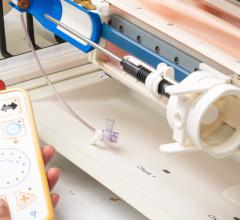
 September 14, 2023
September 14, 2023 
